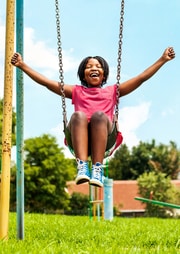Parents with intact marriages do not need to bother about the requirements for child support for their child’s post-secondary education, but what about divorcees or parents in a similar relationship? The case is different, and many factors are weighed to determine a parent’s requirement for post-secondary support.
Post-secondary or post-minority education, such as college, university, or other advanced education programs, is categorized under section 7 or special expenses. And while both divorced parents might voluntarily agree to take care of the post-secondary education expenses, other times, a parent mostly a custodial parent, might raise such a request, or any party in a 50/50 custody child support agreement can do so.
The age for a post-minority child varies across the states in the US, some 18, some 19, others 21. Also, laws like the divorce act and the family law act affect these requirements. Courts can also adjust requirements based on factors such as the parent’s financial circumstances, the child’s needs, and the child’s eligibility for loans or grants. A family lawyer can provide guidance in navigating these adjustments to ensure fair and appropriate arrangements are made.
The court also checks the child’s good academic standing, program cost, willingness to remain under his parent, and other possible factors. Therefore, this article will show you the basic requirements for states in the US.
Requirements for Child Support for Post-Secondary Education across States in US
There are three categories for post-secondary support in the US, namely;
- States that do not require post-secondary educational support, namely; Alaska, Arizona, Arkansas, California, Delaware, District of Colombia, Florida, Idaho, Kansas, Kentucky, Louisiana, Maine, Mississippi, Nebraska, New Mexico, Nevada, Oklahoma, Ohio, Pennsylvania, Rhode Island, South Dakota, Tennessee, Texas, West Virginia, Wyoming, Kentucky, and Wisconsin.
- States that require post-secondary educational support are; Hawaii, Indiana, Illinois, Iowa, Massachusetts, Missouri, New Hampshire, New Jersey, New York, Oregon, South Carolina, and Washington.
- States requiring post-high school education support and have some stipulations: Colorado, Connecticut, Georgia, Maryland, Michigan, Minnesota, Montana, North Carolina, North Dakota, Utah, Vermont, and Virginia.
You can check the financial support required for your State’s post-secondary educational expenses below.
States that do not Require Post-Secondary Support for Educational Expenses in the US

Alaska – The majority age for Alaska is 18 years, and following the Dowling rule does not require Post-secondary school support for the majority except for disabled children.
Arizona – While the majority age in Arizona is 18, post-secondary financial support is required for disabled children and children who are still in high school at the time of clocking 18. If the child in high school is emancipated for reasons other than clocking 18, the legislature does not cover that child.
Arkansas – The majority age in Arkansas is 18. At this age, except for mentally and physically disabled children, the legislature does not require any parent to cover financial and educational costs.
California/Delaware/Maine – Child support for educational expenses is only required for incapacitated children and children who turn 18 while in high school. For a majority child in high school, the grace for this support terminal when the child clocks 19 or at the child’s high school graduation; anyone that comes first.
District of Colombia – Unlike previously listed states, the majority age is 21, and the support ceases once a child exceeds 21. Though, the court requires it in exceptional cases like the case of a disabled child.
Florida – Post-secondary education support is required for mentally and physically incapacitated children past majority age or a dependent high school child between 18-19, or with good academic records. Also, the statute allows courts of competent jurisdiction to decide on increasing or decreasing support for a dependent child until the child’s age is 21.
Idaho – Idaho requirement is exactly like California, but it is decided by the court whether to favor the requirement when a child clocks 18.
Kansas – The post-secondary school support for educational costs is only required if the parents agree.
Kentucky – Post-secondary support for educational costs is only required for a mentally or physically incapacitated child.
Louisiana – In Louisiana, child support for educational purposes is terminated once a child is a majority or emancipated, except till 19 for a secondary school child with good standing and dependent on a parent.
Mississippi – The age of majority is 21, and support terminates at 21 unless the child marries or is recruited into the army.
Nebraska – The majority age in this State is 19, so educational costs are supported till age 19.
New Mexico – The court has no right to enforce post-secondary support for educational expenses. Their majority age is 18.
Nevada/Oklahoma/Ohio – Post-high school education costs only last until a child ages 18 or 19 if still in secondary school.
Pennsylvania – Post-secondary education support is not required.
Rhode Island – The court can order post-secondary educational support for high school students for 90 days or more after their eighteen birthday but not beyond their nineteen birthday.
South Dakota – supports paying post-high school education costs only last till a child clocks 18 or 19 if still in secondary school.
Tennessee – The statute in Tennessee allows parents to provide post-secondary support till a child is 18 or till a child in high school or his class graduates from high school.
Texas – Post-high school education expenses only last until a child ages 18 or 19 if still in secondary school.
West Virginia – Support can last more than the majority age (18) unless the child has physical or emotional disabilities.
Wyoming – A child can be supported until 18 or 20 years if still in high school or its equivalent.
Kentucky – Support can last more than the majority age (18) unless the child has physical or emotional disabilities.
Wisconsin – supports paying post-high school education expenses only last until a child ages 18 or 19 if still in secondary school
States that Require Child Support for Postsecondary Education Support (PES) and with Stipulation

Colorado – The Colorado legislature does not require PES after a child is 19 unless the parties agree. Otherwise, the child is physically or mentally disabled, or the child is still in high school.
Connecticut – Support end at age 18 unless the child is in secondary school, unmarried, and still living with one of his parents. This exception ends after the child finishes 12th grade or reaches 19. The court can also compel support for a child in exceptional cases.
Georgia – The support for post-minority in Georgia terminates once a child reaches majority age, dies, marries, or after emancipation.
Maryland – Supports last till 18, or 19/graduation, if the child is in high school. The court may check the court order or existing separation or property settlement agreement to determine if a case is appropriate.
Michigan – After a child reaches a majority, a court can still order for support of a full-time student until the child is 19 years and a half.
Minnesota/ North Carolina – Allows support for a child till 18 or 20 if the child is a high school student or disabled.
Montana – Allow support for a child till 18, or 19/graduation if still in high school, and more than 19 if disabled.
North Dakota/Virginia – The support last till 18, or 19/graduation, if the child is in high school. The court may extend this support in critical situations.
Utah – A child can become a post-minority child when he clocks 18 or gets married, and the support end then. The court can extend this period for exceptional cases.
Vermont – The support end at the majority age; 18. But support ends at 21 if the child is still in school, college, university, or vocational training. Also, during the statutory period, a trial court can increase the postsecondary educational cost the husband remits, notwithstanding the stipulation incorporated in the divorce judgment allowing paying child support beyond the statutory timeline.
States that Require Post-Secondary Support for Education Expenses in the US
Hawaii – The support terminates when the child reaches 19 years. Also, a 3-month notice must be sent before the clocks 19. When the child is a full-time student in a college or university before age 19, the court has to be notified by the child or the custodian parent not to suspend the support.
Indiana – In Indiana, there might be a child support order to pay a summation of the education costs in higher learning institutions where necessary. Where it is not the case, child support ceases when a child is 21.
Iowa – In Iowa, the extent of post-minority support depends on the child’s financial capability, age, and self-sufficiency to cater to his need. Hence the trial court might order child support for a child age 18 – 21 if the child is a full-time student, has accepted an admission, or has a good academic standing.
Massachusetts – After the majority age of 18, support can be extended to 21 if the child stays with either parent and is already enrolled in an educational program. The court can also order an extension till 23 if the child is dependent on the parent because of the course the child is enrolled in, but not beyond the undergraduate degree.
Missouri – While support lasts until 18, Missouri requires support for a child enrolled into a higher institution until the child is 22 or graduates, whichever comes first.
New Hampshire – Support lasts till 18, or when the child completes secondary school above 18. Marriage, emancipation, and joining the army can also terminate support.
New Jersey – Support last till 19 years and till 23 if the child is still in high school, college, or disabled.
New York – Support last till 19 but can also be extended to 21. In most cases, the court determines whether to place a child support order for post-high school educational support for college, private school, or special academic programs.
Oregon – Support last till age 18. However, it can be extended to 21 for an unmarried child in high school or college.
South Carolina – Support last till 18. But a family court can request parents to cater to a child’s high school or college education in cases where the child’s attitude indicates that he or she will benefit from college. Or the child has good academic standing, or the child has to go to school, or the parent can afford the cost of the education.
Washington – Support last till 18 and may extend above that if the child still depends on a parent. Based on many factors, the court determines whether the adult child is dependent on the parent for cogent necessities of life.
Note: You might need to consult an attorney or click here for better clarification if you are confused.
Conclusion
Since these requirements from parents vary, it is essential for divorcing parents to keep themselves updated with changing statutes in individual states. Also, parents can agree to cater to their child’s educational expenses beyond the laws.
Additional Resources
 Author bio:
Author bio:






 Ava Roman (she/her) is the Managing Editor of
Ava Roman (she/her) is the Managing Editor of

